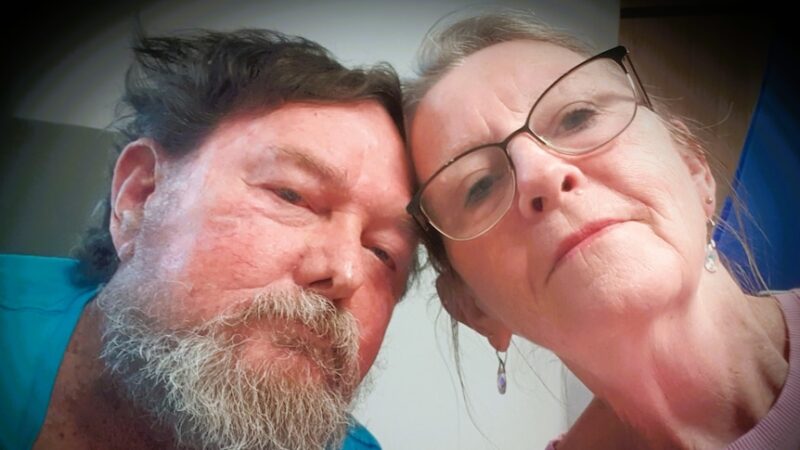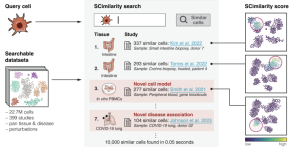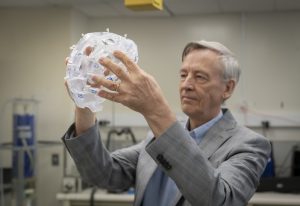Gladstone man’s life ‘turned upside down’ after routine check-up led to myeloma blood cancer diagnosis

When Peter Robson visited his doctor for a routine check-up, he never imagined the results would change his life forever.
Scans showed his vertebra had been eaten away, he had a fracture in his jaw and holes in his ribs.
“It was like white ants eating the bone away from the inside out,” Mr Robson said.
Shocked and confused, the Gladstone man was sent to a haematologist (a specialist in blood diseases), who revealed he had multiple myeloma — a rare type of blood cancer that impacts plasma cells.
“We got home [from the scans] and we got a phone call saying, ‘Peter, you’d better get down to Brisbane now’,” he said.
“Well … life was turned upside down right at that moment.”
Mr Robson went from working full time in central Queensland, as a welding inspector on large commercial projects, to the world of chemotherapy, radiation and stem cell transplants in an effort to save his life.
His wife, Tricia, said the family was in “complete shock”.
“We were in fear and trepidation, I suppose, because we had no idea what we were going to find out,” Ms Robson said.
“It was shock … complete shock, and then you’re put into this spiral of feelings because you’ve got no control over what’s happening.”
New therapies giving hope
It’s been nine years since Mr Robson’s multiple myeloma diagnosis and, while there is no cure, his treatment continues.
Leukaemia Foundation health services general manager Kathryn Huntley said myeloma patients experienced weakened bones and increased bruising.
“We don’t really know the exact lead-up causes to myeloma and, sadly, there’s nothing we can do as far as screening or prevention in our behaviours to stop our likelihood of myeloma occurring,” she said.
“While it impacts our blood, it also has an impact on our bone strength, and secretions that occur as a result of myeloma can make a person’s bones weak.”
Ms Huntley said new therapies and research are helping people live longer with the disease.
One in particular, CAR T cell immunotherapy, is giving patients a beacon of hope on the horizon.
“I’ve worked in this area for over 20 years and we’re seeing people live longer with myeloma with the introductions of new therapies … but the job’s not done,” Ms Huntley said.
‘He’s a fighter’
Mr Robson’s next appointment with specialist doctors is next week.
Check-ups are an intense time for the family, especially after he almost succumbed to the disease last year.
The myeloma had aggressively eaten away at the bone in his left arm, meaning surgery and another stem cell transplant.
“Peter suffered a cardiac arrest and nearly died as a result,” Ms Robson said.
“[But] he’s a fighter, always has been very positive with his outlook and took it all in his stride.”
Ms Robson said the impact emotionally and financially had completely altered the course of their lives.
“We’ve had a long journey to try and get back to some sort of normality … but you never do get back to normality, really,” she said.
“You don’t know whether you’re supposed to be happy, sad, whatever, you really don’t know what every day is going to bring, so I would really like to sing the Leukaemia Foundation’s praises.”
Ms Huntley said an estimated one in 12 Australians were diagnosed with blood cancers such as leukaemia, lymphoma and myeloma.
Medical research was the key to finding a cure for myeloma and to improving the quality of life of the 140,000 Australians living with blood cancer, she said.
“The Leukaemia Foundation is here to support people through the challenges of facing treatments for many, many years, as well as investing in research, so we can find the therapy that’s going to stop wrecking people’s lives when they’re diagnosed with myeloma.”
Get our local newsletter, delivered free each Friday







